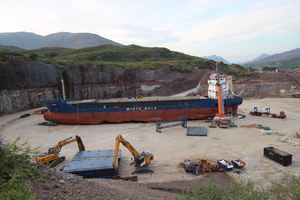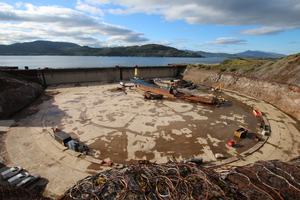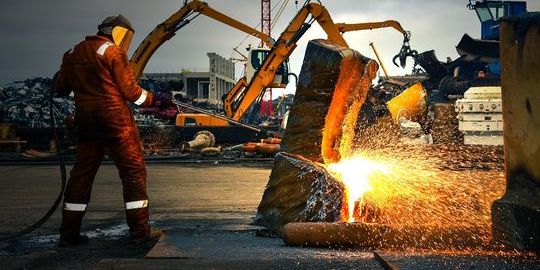A look at oil and gas decommissioning in the North Sea
Antonia Grey, Public Affairs and Communications, BMRA
If you ever found yourself on the banks of Cromarty Firth, you would be forgiven for being more than a little confused. For, instead of a vista across the firth to the rolling highlands, your gaze would be interrupted by some 14 oil rigs.
While some of the rigs out there have been temporarily ‘furloughed’ in response to falling oil prices, others are waiting to be scrapped, also known as decommissioned or downsized. Cromarty Firth has, in effect, turned into an oil rig graveyard. In 2018, three of the rigs, which were destined to be scrapped, were prevented from leaving by Scottish Environment Protection Agency (SEPA) over fears they were heading to be illegally broken up on beaches in India or Bangladesh.
The rigs are part of a five-platform lot sold by offshore drilling company Diamond Offshore to an intermediary, Global Marketing Systems (GMS), in 2017. A BBC investigation found that two of the lot were sent to Alang in India, a well-known breakers hub with a number of shipbreakers operating up and down the coastline.
However, under a slew of regulations, it is illegal for companies in the UK, the United States and Europe to send vessels there without removing hazardous waste from them first — a process which takes both time and money. These regulations include: the Basel Convention; the Hong Kong Convention; and, the European Union Waste Shipment Regulation.
Another, the European Union Ship Recycling Regulation (EU) No 1257/2013, sets specific requirements for EU-flagged ship recycling activities, which include environmental protection as well as occupational health and safety standards that go beyond the Hong Kong Convention. The EU even keeps a list of approved facilities across the world that can recycle EU-flagged commercial vessels. Non-EU flagged vessels sold for scrapping whilst in European waters are covered by the Waste Shipment Regulation.
Some two years on and SEPA remains adamant that the rigs will not be permitted to leave until the Agency is convinced that they will be decommissioned in a safe, environmentally sound manner. Its preference is, of course, that these rigs be scrapped in Scotland so the country can realise the economic and environmental opportunities of North Sea decommissioning.
Given the hazards found in an old oil rig, from asbestos to heavy metals to PCBs, there are few companies permitted by SEPA to recycle rigs in Scotland. Two come to mind, Dales Marine Services Limited in Edinburgh and Kishorn Port Limited, in the Highlands on the west coast.
Having seen the Kishorn Dry Dock during visits to a friend who lives on the Applecross peninsula in Wester Ross, I had already learnt that it was developed to build oil platforms in the 1970s. Indeed, it was here that the gargantuan, 600,000 tonne Ninian Central Platform was built. It therefore appeals to me that Kishorn, having recently been overhauled, might have a role to play in decommissioning the very rigs it might have built; and beyond.

Kishorn Port now holds a Waste Management Licence from SEPA to decommission offshore oil and gas assets. This year, in partnership with BMRA member John Lawrie, it broke and recycled the Bahamas-registered MV Kaami, a cargo ship that had run aground six miles off the coast of Skye in March. While not an offshore asset, the Kaami was decommissioned in just 13 weeks, from initial consultation to delivering fully depolluted, recycled material to the steel mills.
Some 1,200 tonnes of mixed materials were recovered on site, which was then shipped for further processing and recycling. As an advocate of reuse, John Lawrie ensured that those items that could be reused - the propeller and the wheelhouse - were set aside. In fact, the wheelhouse takes pride of place at the visitor’s viewing gallery overlooking the dry dock.

With hundreds of rigs involving millions of tonnes of structure set to be decommissioned and then reused or recycled in the coming years, I hope that a good number of them make their way to a facility in the UK to be processed, then reused or recycled. While Scottish operators make environmental sense as it avoids a long journey to India or even Turkey, I am pretty sure a journey southwards to Great Yarmouth, for example, could prove an acceptable alternative. If we are truly to deliver a circular economy while reducing our carbon emissions, recycling these giants as close as possible to where they stand must be a priority.
I am going to Scotland soon and, even if it is a holiday, I might try and persuade my friend to drive me to Kishorn so I can have another look. If I am really lucky, they will be busy ‘downsizing’ something from the North Sea and, if it is something impressive, he might just forget to be grumpy.
Photos in article ©John Lawrie Group



